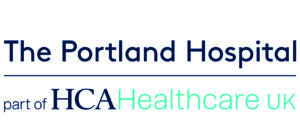How does the urinary system work?
The urinary system consists of the kidneys, the bladder and ureters. The kidneys filter the blood to remove waste products and form urine. The urine flows from the kidneys down through the ureters to the bladder. From here it passes through another tube called the urethra to the outside when urinating (peeing).
Why does my child need to have this operation?
A nephrectomy is needed because all or part of their kidney is not working properly. This could be due to an abnormality that they were born with or can be the result of infection. This could cause infections which may damage the other kidney, and make it more likely that your child will have high blood pressure at some point in their life. Being left with one kidney should not cause your child any problems.
What happens before the operation?
Your child will be seen in COPD by their Consultant to discuss the operation.
You will be contacted by our Urology Nurse or the pre-assessment nurse 4-7 day prior to admission in our ‘pre-operative assessment clinic’ or over the phone. This will ensure you have all the relevant information you need before the day of the operation.
What happens when my child is admitted to hospital?
Your child will be seen by the nursing team, Consultant and the Anaesthetist.
The Anaesthetist will review your child’s general health and discuss the anaesthetic care plan.
Usually a urine specimen will be collected from your child before the operation and blood tests may also need to be performed.
What does the operation involve?
In most cases, your surgeon will remove the kidney using keyhole surgery (laparoscopically) but sometimes traditional ‘open’ surgery may be more appropriate.
Open surgery tends to be used if the kidney is very large or badly infected.
In keyhole surgery, a telescope is used, with a miniature video camera mounted onto it, this is inserted through a small incision (cut) to see inside the abdomen.
Carbon dioxide gas is used to inflate the abdomen to create space in which the surgeon can operate using specialized instruments that are passed through other smaller incisions into the abdomen. The kidney is removed through one of these small incisions. After the operation, these small incisions are closed with Steri-strips.
In traditional open surgery, the surgeon will make an incision (cut) in your child’s side and remove the kidney this way. This incision will be closed using dissolvable stitches covered with Steri-strips.
What are the risks of a nephrectomy?
What happens after the operation?
Your child will be brought back to the ward to recover. He or she will be able to eat and drink soon after the operation. Your child may have a tube (catheter) coming out of the bladder to drain away urine. This is usually removed two days after the operation and then you will be able to go home.
What happens immediately after the operation?
How long will my child stay in hospital for and can I stay with him/her?
The length of stay will depend on each individual child but the average length of stay is two to five days. A parent will be able to remain resident on the ward in a bed at the side of the child’s bed.
How do I look after my child at home?
Follow up:
An outpatient appointment will be given as follow up, usually three months after discharge.
For further information, please contact:
If you have any questions or problems either before or after the surgery, please do not hesitate to contact Nasra Ahmed, Complex Surgical/Pain Lead Nurse, on 020 7580 4400, 10838 (09:00 – 17:00 Monday to Friday) or email at: [email protected]
For Out of hours: Contact our Paediatric Site Practitioner via the switchboard on: 02075804400 ext: 10843
